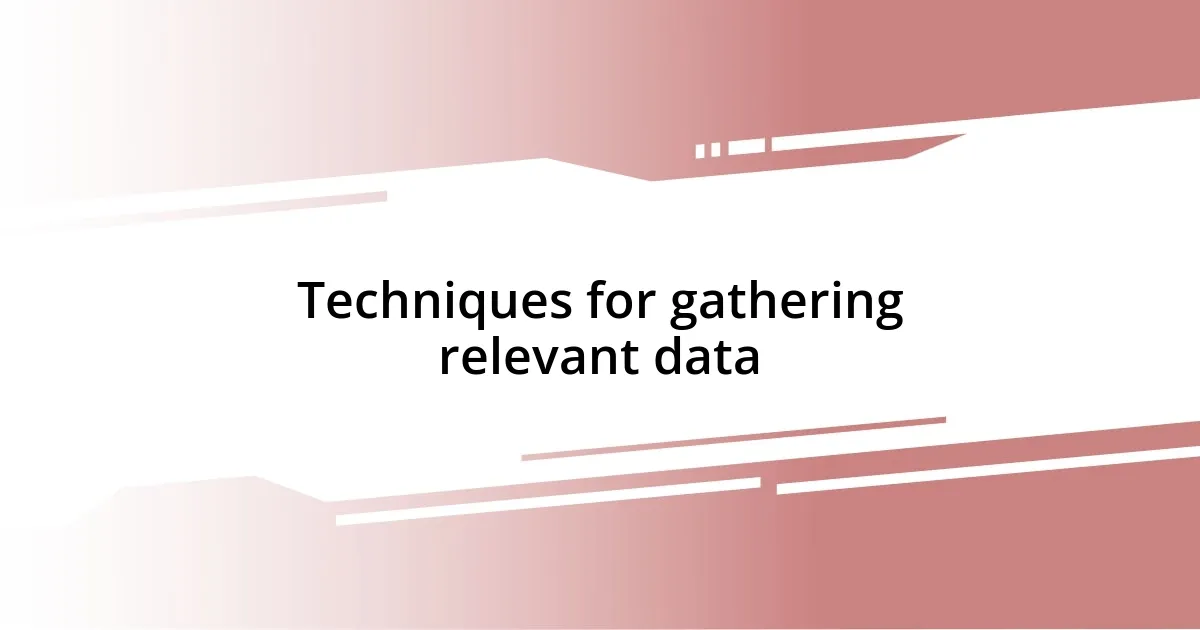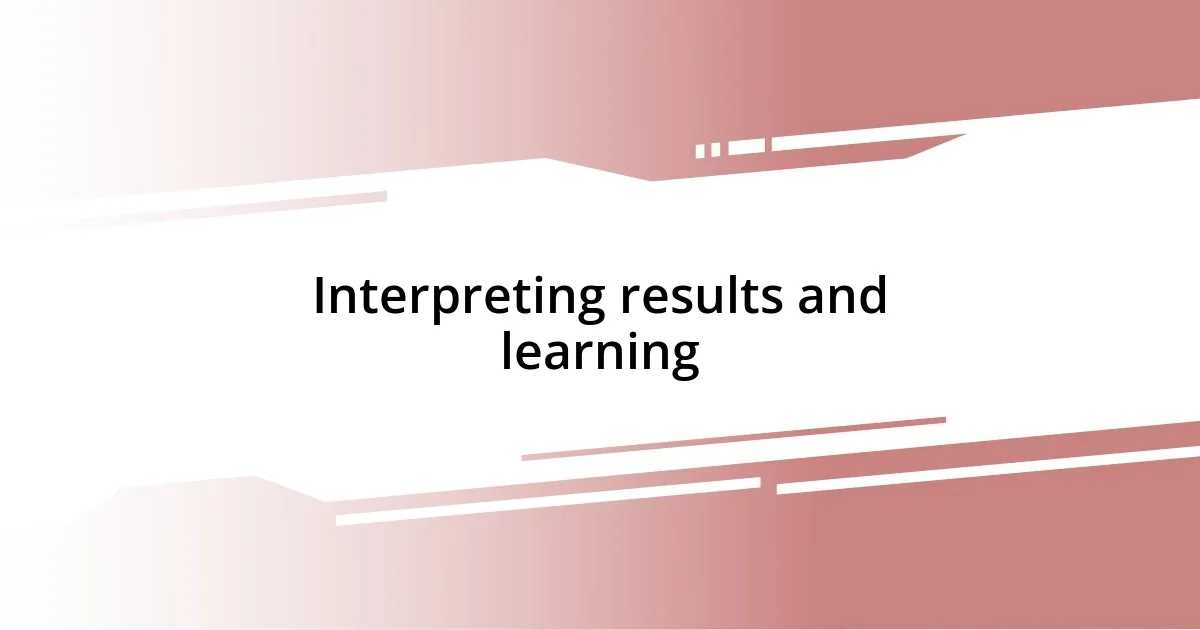Key takeaways:
- Validating assumptions involves curiosity and skepticism, akin to a detective’s approach, where evidence gathering through diverse methods is critical.
- Understanding user feedback and analyzing data can reveal deep insights that challenge initial assumptions and lead to improved strategies.
- Experimentation, such as A/B testing, is essential for validating ideas in real-world scenarios, often surprising and informing the decision-making process.
- Iterative changes based on findings, combined with open-mindedness, can substantially enhance project outcomes and user experiences.

Understanding assumption validation process
The assumption validation process is essential for making informed decisions. I remember a time when I took a leap into a new project, driven by an assumption that everyone shared my vision. As it turned out, that initial belief was far from reality, and the outcome was a frustrating surprise. How often do we rely on untested beliefs without checking the facts?
In my experience, validating assumptions involves a mix of curiosity and skepticism. It’s like being a detective; you need to gather evidence, whether through surveys, feedback, or direct observations. Each time I’ve consciously sought out contrary opinions, I’ve uncovered insights that not only strengthened my position but also deepened my understanding of the subject matter. Doesn’t it feel empowering to challenge your own beliefs?
Moreover, it’s fascinating how validation can shift your perspective entirely. There was an occasion when I assumed a particular feature in a product was a must-have, only to discover that users prioritized something else entirely. That moment taught me the importance of remaining adaptable and open-minded. Have you ever faced a similar realization?

Identifying key assumptions effectively
Identifying key assumptions requires a thoughtful approach. One effective method I’ve found is to create a list of beliefs related to a project or goal. When I did this for a marketing campaign, I discovered several unwritten beliefs that shaped our strategy but weren’t based on data. Not surprisingly, confronting these assumptions led to a more informed and successful campaign.
In my journey, I’ve learned that prioritizing assumptions based on their impact is crucial. For instance, during a product development phase, I initially focused on user preferences, overlooking technological feasibility. After reevaluating, I identified that understanding our capabilities was just as important as user needs, which ultimately allowed us to innovate more effectively.
Gathering feedback from diverse stakeholders has proven invaluable too. Early on, I relied heavily on my small team’s perspective, but when I sought input from users directly, the insights were eye-opening. This shift in approach helped me validate or refute assumptions that were once taken for granted, transforming my perspective on what truly mattered.
| Approach | Description |
|---|---|
| Listing Beliefs | Identify and document assumptions related to the project. |
| Prioritizing Impact | Assess the significance of assumptions on project outcomes. |
| Gathering Feedback | Engage diverse stakeholders to validate or challenge assumptions. |

Techniques for gathering relevant data
When it comes to gathering relevant data, I often turn to a range of techniques that complement each other. For example, I’ve found that user interviews can yield rich, qualitative insights. Once, a simple conversation with a user led me to understand their pain points in a way that surveys could never capture. This personal touch can unlock layers of information that statistics alone might obscure. Additionally, I enjoy analyzing usage data to spot trends and patterns; it feels almost like piecing together a puzzle, revealing how assumptions align or diverge from reality.
Here are a few techniques I’ve successfully employed to gather data:
- Surveys and Questionnaires – Distributing structured questions to collect quantitative data from a broad audience.
- User Interviews – Conducting one-on-one discussions to dive into personal experiences and uncover deeper insights.
- Focus Groups – Organizing group discussions to capture diverse perspectives and stimulate conversation around key assumptions.
- Data Analytics – Leveraging analytical tools to assess existing user data for trends and behaviors that validate or challenge assumptions.
- A/B Testing – Running experiments to compare two versions of a product or feature to see which one resonates better with users.
In my experience, combining these techniques often leads to the most thorough validation process. For instance, while running a campaign, I relied on a mix of analytics and user feedback to shape my approach. The moment I noticed a mismatch between data trends and user sentiments, it prompted me to dig deeper. That epiphany not only refined my strategy but also enhanced my confidence in making decisions supported by real evidence.

Analyzing data for insight
Analyzing data for insight goes beyond mere numbers; it’s about uncovering the stories they tell. I distinctly remember a project where initial figures suggested we were doing well, but when I delved deeper into the data, I noticed a troubling dip in user engagement. It was a moment of realization that sometimes the surface doesn’t reflect the full narrative. Have you ever encountered a similar dissonance in your analysis? Those moments can be pivotal, guiding you to investigate assumptions you might have taken for granted.
As I sift through data, I often look for anomalies or outliers. I recall a time when one particular group’s feedback stood out starkly from the rest, signaling a potential market that we had ignored. This experience taught me the importance of not just following trends but also acknowledging those oddities that could then lead to valuable breakthroughs. In the end, it was that misfit data that reshaped our marketing strategy and unveiled a hidden demand.
Reflection is crucial in the analysis process. After compiling and reviewing all the data, I take a step back to consider the implications. I once faced a scenario where data aligned perfectly with my team’s assumptions, which felt validating yet risky. It prompted me to ask: were we truly seeing the complete picture? The introspection led me to seek outside perspectives, ensuring that the insights I derived were well-rounded and robust. It’s these reflective moments that often enhance my understanding and promote a more comprehensive approach to analyzing data.

Testing assumptions through experimentation
Testing assumptions through experimentation is where ideas truly come to life. I remember a time when I hypothesized that a new feature would drive user engagement. Instead of guessing, I ran a simple A/B test. To my surprise, the results revealed the opposite; users preferred the original interface. It was a humbling moment, one that reminded me how critical it is to validate assumptions through real-world data rather than intuition alone.
When experimenting, I often think about the emotional side of things. I’ve found that testing isn’t just about metrics; it’s about understanding how users connect with what you’re offering. During one project, I integrated feedback loops into the experimentation process. It allowed me to grasp not just the “what” but the “why” behind user preferences. Have you ever mulled over why a seemingly straightforward change drew such a mixed response? That complexity adds a richness to the data that mere numbers can’t capture.
Each experiment teaches a lesson, whether it validates my assumptions or not. I recall implementing a relatively minor change in messaging during a product launch. The feedback was overwhelmingly positive, yet the sales numbers remained flat. Initially frustrating, this divergence taught me the importance of approaching assumptions with curiosity and adaptability. It serves as a reminder that every experiment is a step toward a deeper understanding, and sometimes the unexpected outcomes lead to the most profound insights.

Interpreting results and learning
When interpreting results, the first step I take is to ensure I’m not overly attached to my initial expectations. I vividly recall a situation where a project I was excited about returned data that contradicted my hopes. Instead of brushing it off, I engaged with the findings, inviting my team for a brainstorming session. This collaborative approach opened up new perspectives and revealed underlying factors I hadn’t considered. Have you ever felt that initial jolt of disappointment transform into an opportunity for growth? Learning to embrace those moments can be where the real insights lie.
The emotions tied to interpreting results can be surprisingly intense. I remember reviewing feedback from a recent product launch, which initially felt like a slap in the face due to negative comments. However, as I carefully sifted through the responses, I discovered a wealth of constructive criticism that wasn’t apparent at first glance. By taking the time to understand rather than react, I turned that potentially discouraging feedback into actionable steps for improvement. It made me wonder—how often do we avoid diving into discomfort when the insights are right there waiting for us?
Ultimately, every piece of data has a lesson to teach. After analyzing the results of a marketing campaign, I was struck by how our messaging resonated differently across various demographics. Instead of dismissing the lower engagement numbers from one group, I investigated deeper and found a cultural nuance we had overlooked. This experience reaffirmed my belief that interpreting results isn’t just about numbers; it’s about understanding the people behind them. How about you—what hidden stories have your data revealed when you took the time to look closer? This mindful process of exploration can lead to discoveries that are both surprising and enriching.

Iterating based on findings
After gathering data, the real magic happens when I dive into refining my approach based on my findings. I vividly remember a project where initial feedback was crystal clear: users didn’t find a certain feature intuitive. Rather than shrugging it off, I took that feedback seriously. By collaborating with the design team, we completely rethought the feature. Have you ever approached a challenge that seemed daunting at first, only to uncover a more elegant solution with a bit of teamwork?
As I iterated on my ideas, it became evident that small adjustments could lead to significant improvements. I once had a marketing strategy that, on paper, looked favorable. Yet, after analyzing user interaction data and tweaking our messaging slightly, engagement soared. It was a reassuring reminder of how ongoing tweaks can reveal unexpected pathways to success. When was the last time you embraced a subtle change that turned your project around?
Iterating based on findings also requires me to keep an open mind—sometimes the insights I derive aren’t what I expected. I recall refining a user onboarding process that didn’t resonate well initially. By studying user drop-off points, I rewrote the onboarding steps, integrating user input directly. What I discovered was not just about what needed changing, but also about truly understanding user journeys. Isn’t it fascinating how a willingness to adapt can shape our understanding and ultimately, our success?














